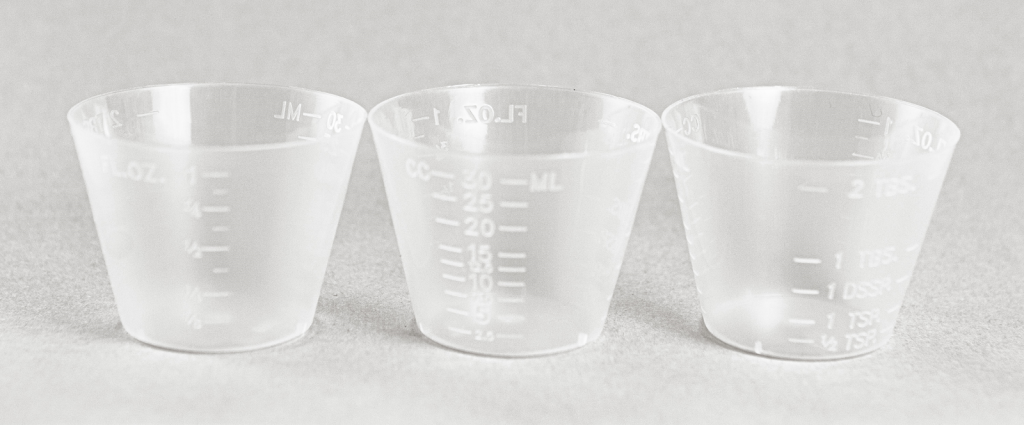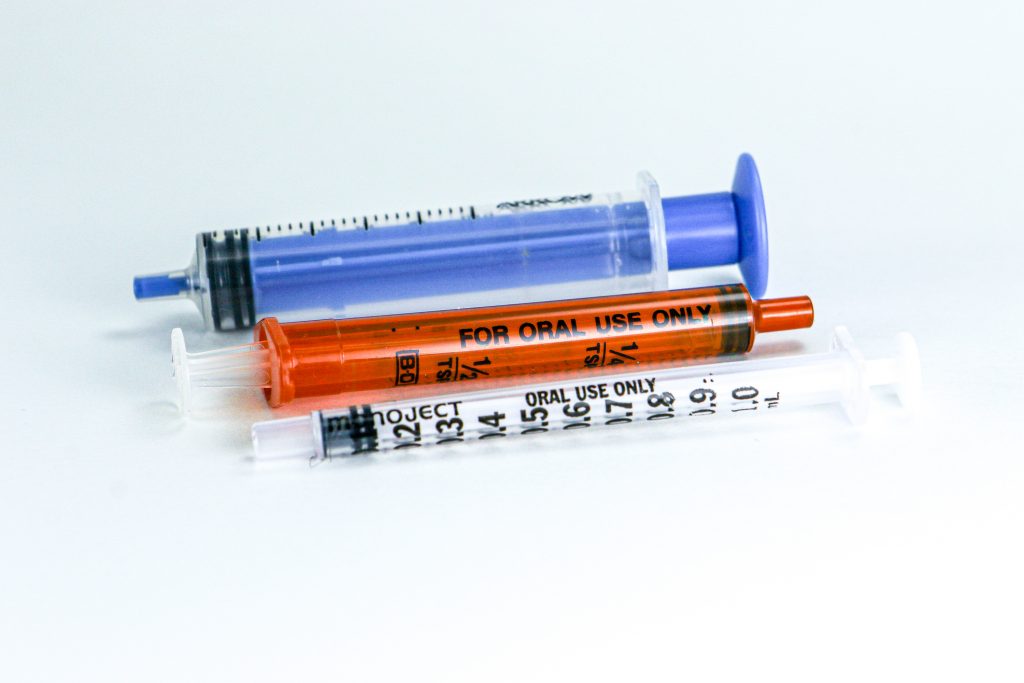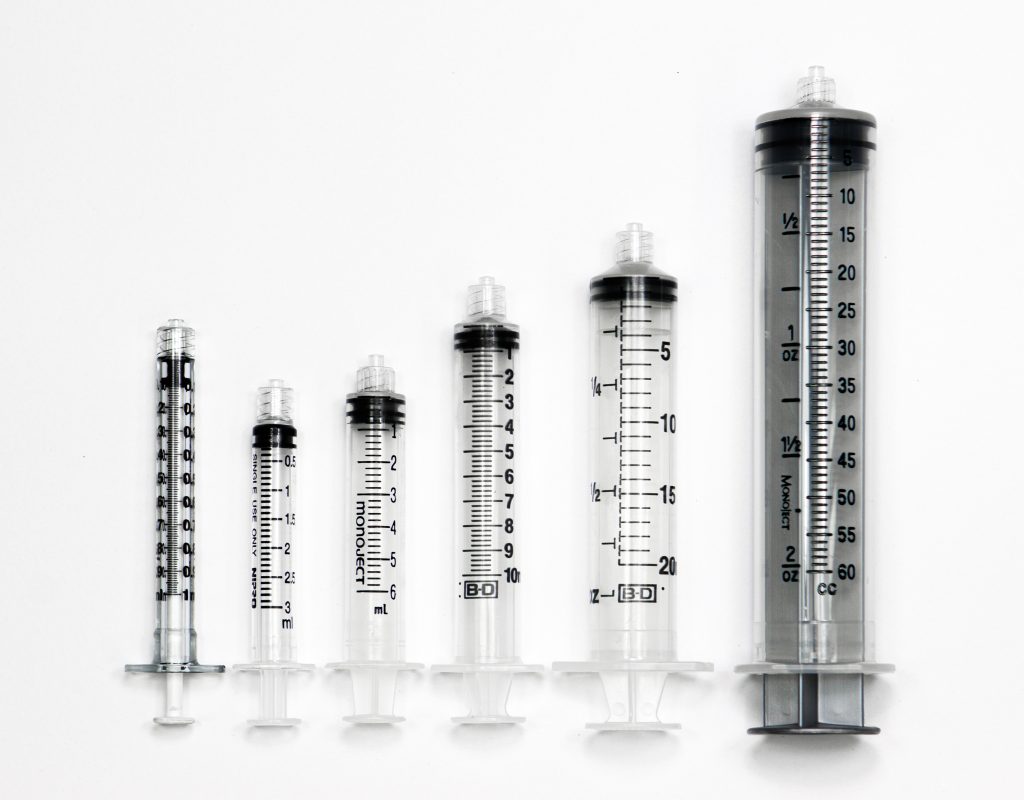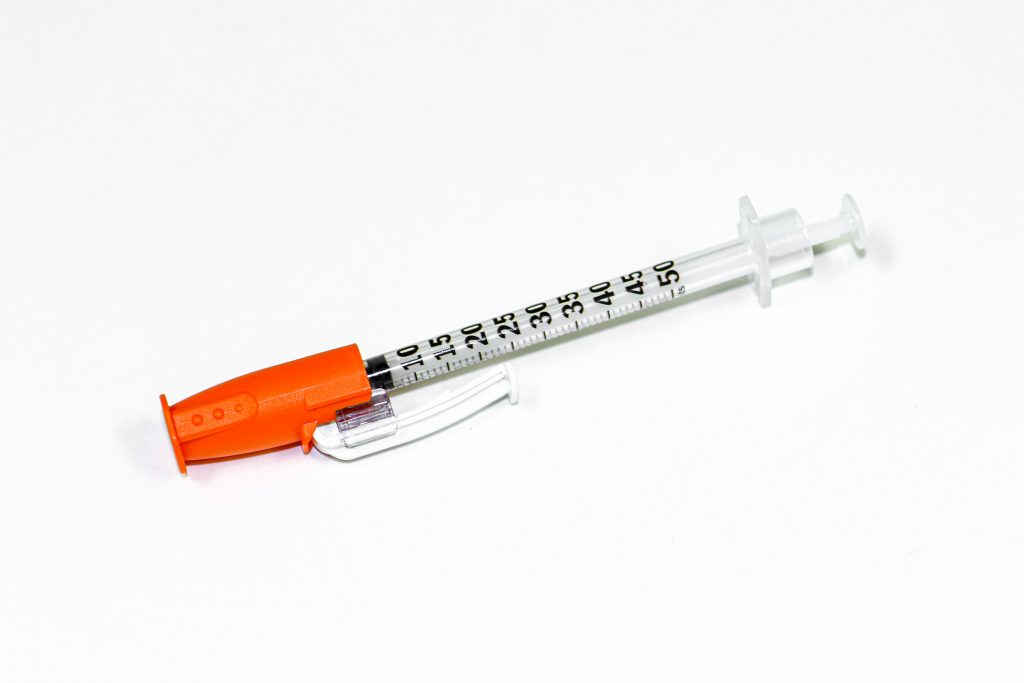5.2 Math Basic Concepts
Measuring Devices
Depending on the type and amount of medication that is being administered, there are several devices used for measuring and administering medications.
A medication cup that is composed of plastic or paper is used to hold and dispense oral medications to a patient. A paper cup is used to administer nonliquid medications, such as tablets or capsules. A plastic medication cup is used to dispense both liquid and nonliquid medications, and calibrated cups are also used to measure liquid medications prior to administration. Calibrated medication cups have labelled measurements such as ounces (oz), cubic centimeters (cc), milliliters (mL), teaspoons (tsp), and tablespoons (Tbs). See Figure 5.1[1] for an image of a calibrated medication cup.

Oral syringes are used to administer liquid medications via the oral route, especially to children, because they allow for precise measurement of small doses. See Figure 5.2[2] for an image of an oral syringe. Oral syringes have different tips than syringes used for injections.

Syringes are used when administering medications through the parenteral route (i.e., intradermally, subcutaneously, intramuscularly, or intravenously). There are also syringes specifically developed for oral medication administration. Oral medication syringes are commonly orange in color and have a tip that will not allow the oral syringe to be connected to an intravenous injection port. Syringes used for injections are available in many sizes and are selected by the nurse based on the type of injection and the type of medication administered. Both Luer lock and slip tip syringes are commonly available for parenteral use. Luer lock syringes have a threaded syringe tip that allow the syringes to be screwed into an injection port. Slip tip syringes do not have a locking mechanism or screw-on connection. Slip tip syringes can be easily attached and removed from different injection devices. Many slip tip syringes are found in Foley catheter insertion kits. Common syringe sizes range from 1 mL to 60 mL. See Figure 5.3[3] for an image comparing various sizes of syringes. Syringes are calibrated based on the volume they hold. For example, a 1-mL syringe is calibrated in hundredths, and a 3-mL syringe is calibrated in tenths. Syringes that hold larger volumes, such as 5-, 10-, and 12-mL syringes, are usually calibrated in fifths (two tenths). Large syringes, such as 60-mL syringes, are calibrated in whole numbers.

Special syringes are used to administer insulin and are calibrated in units. See Figure 5.4[4] for an image of an insulin syringe. Insulin syringes are easily identified by a standard orange cap.

- “Medication Cups” by Deanna Hoyord, Chippewa Valley Technical College is licensed under CC BY 4.0 ↵
- “Oral Syringes 3I3A0820.jpg” by Deanna Hoyord, Chippewa Valley Technical College is licensed under CC BY 4.0 ↵
- “Syringes 3I3A0446.jpg” by Deanna Hoyord, Chippewa Valley Technical College is licensed under CC BY 4.0 ↵
- “Insulin Syringe 3I3A0783.jpg” by Deanna Hoyord, Chippewa Valley Technical College is licensed under CC BY 4.0 ↵
A small plastic or paper cup used to dispense oral medications.
A specific type of syringe used to measure and/or administer medications via the oral route.
A medical device used to administer parenteral medication into tissue or into the bloodstream.

